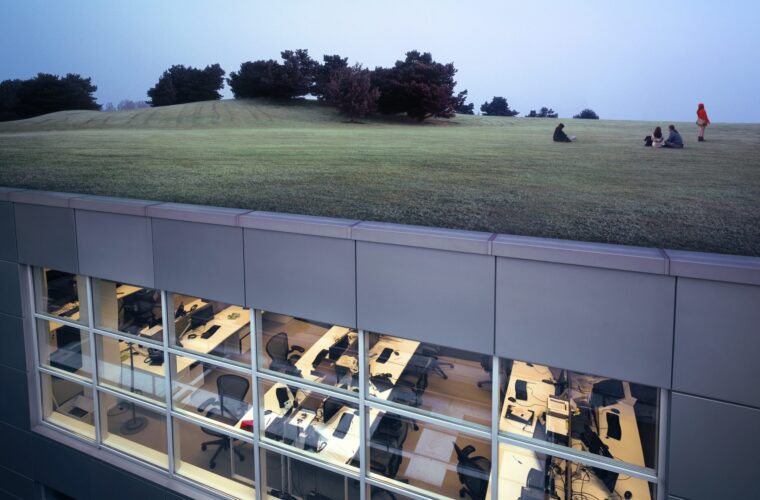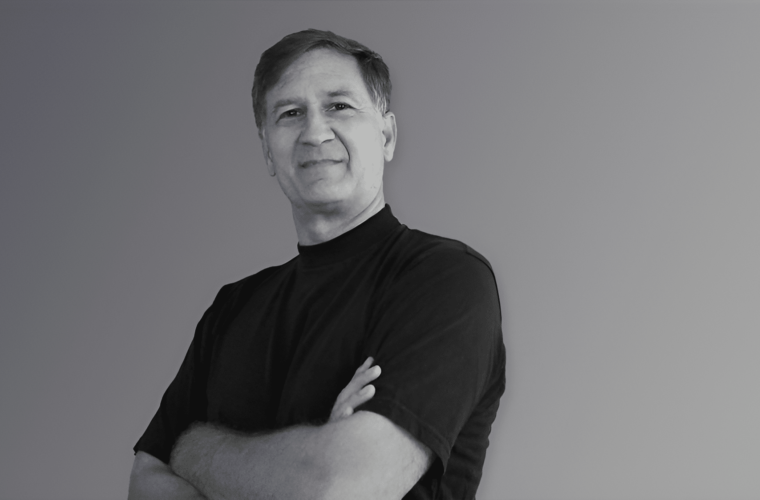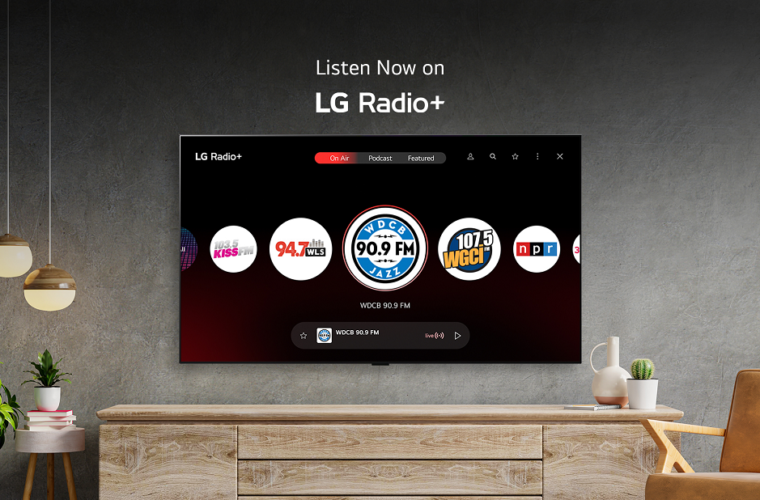We entered the Media & Technology Centre, the operations centre where all the content of the world’s most popular motorsport is produced
I land in London and am greeted by the usual grey skies and rain, but this time, it has no effect on my mood as I am headed to Biggin Hill, a location 25 km south-east of London known for having been the Royal Air Force airport and now used for flight training and as a stopover for private jets. From the only hotel in the area, it takes less than 100 steps to reach the roadblock that marks the beginning of the cordoned-off area, inviolable to those who do not work at the airport.
Many fewer steps are needed to arrive in front of the entrance door of the Formula 1 Media & Technology Centre (MTC), which from the outside looks like a sort of all-black bunker on which the symbol of the most famous of motorsports stands out. Inside, however, is a concentration of technology and adrenalin (we will later understand why), where all the official Formula 1 content is produced, starting with the images that every fan sees on TV during the race weekend. But that’s not all, because replays, radio communication between drivers and pits, commercials and all the footage shown on TV and on the Formula 1 TV app is packaged here.
To find an order of magnitude similar to the kind of production that Formula 1 has set up, you can think of the Super Bowl or the Olympic Games, except that at Biggin Hill, they work all year round because the season is long and to the 24 Grand Prix scheduled from March to December, they add testing before the start, while in the few weeks without track events, the future is being planned by analysing the innovations to be made on the technological, technical and graphic side, in order to improve a service intended for the 74 broadcasters that transmit Formula 1 in 180 countries for a total audience of 1.5 billion fans.
A new balance that provides many advantages
Although the project had been started earlier, the development of the operations centre to remotely manage the more than 500 terabytes generated during each race weekend was accelerated with the coronavirus, when it was impossible to keep moving more than 300 people and tons of equipment from track to track.
Over time, a balance was found between the 140 people working at Biggin Hill and the 160 or so people working on the circuit, where ten days before the race, the Event Technical Centre is set up, the point of connection between the track and the remote control, to then place the cameras and microphones (which in both cases can be as many as 145, as happened in the first GP staged last year in Las Vegas). A basic task of those on the track is to equalise the sound of all the microphones in order to standardise the noise generated by the cars as they go around the circuit.
A hybrid working system of such an imposing and numerous facility offers several advantages over the past: lighter transport means less pollution and lower expenses, but also less wear and tear on the equipment, which is no longer at risk compared to the days when it went from the cold temperatures of the aeroplanes to the 40-plus degrees of the track in the space of a few hours. Servers, high-performance computing solutions, but also Motorola computers, monitors and smartphones, as well as the tools needed to collect and process data, are provided by Lenovo, which after Ducati in MotoGP and Superbike “has focused on Formula 1 to show the strength and efficiency of our hi-tech solutions and devices”, as Lara Rodini, Global Sponsorships & Activation Director at Lenovo in charge since 2018, explained to me.
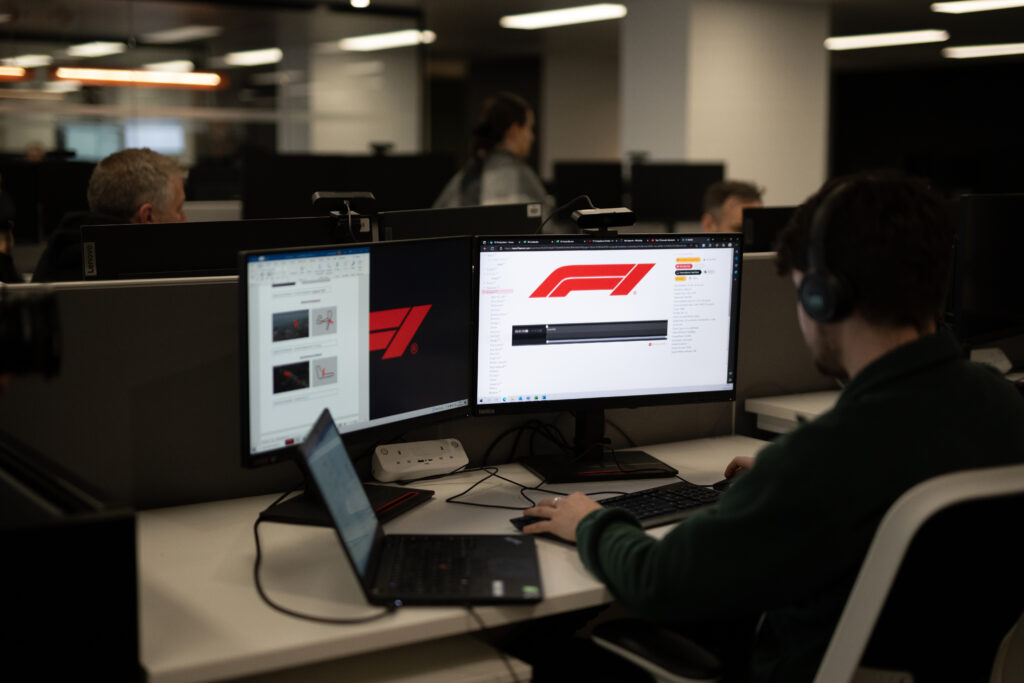
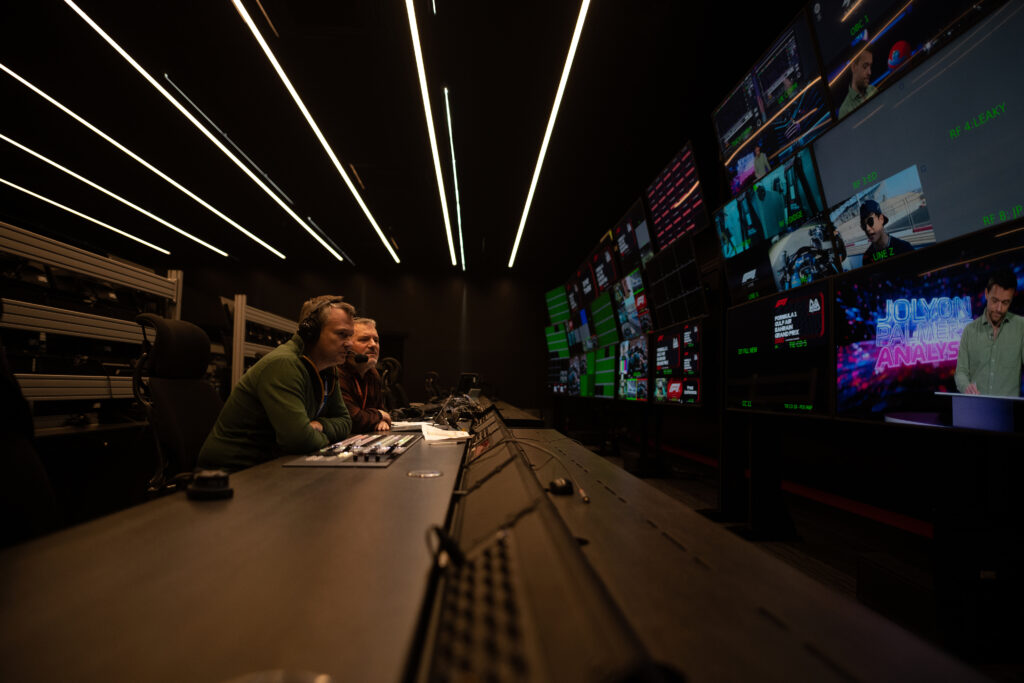
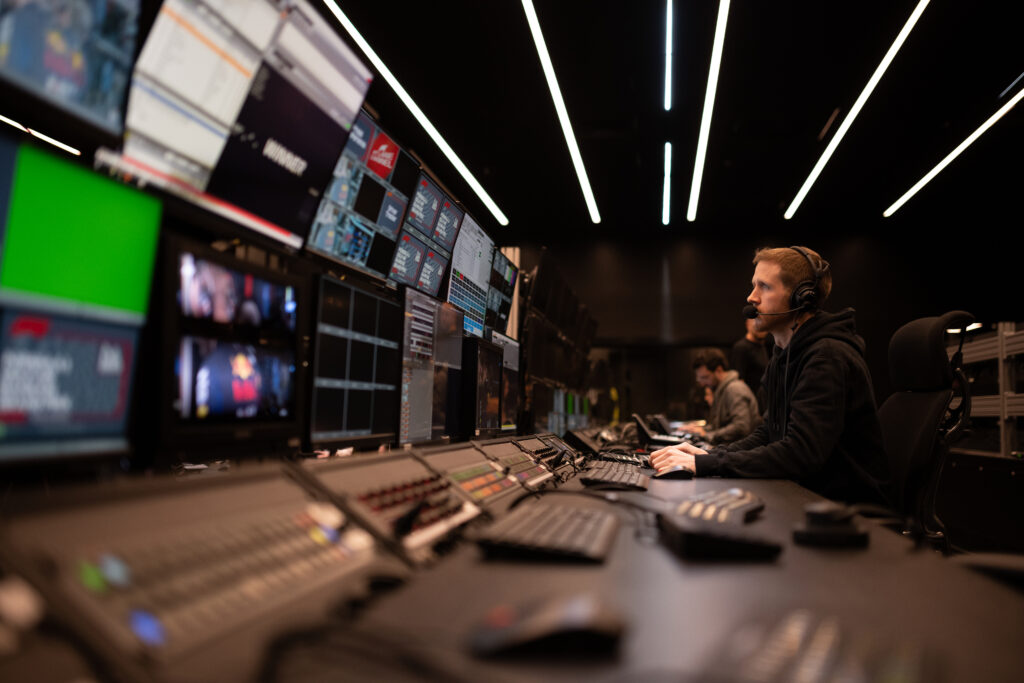
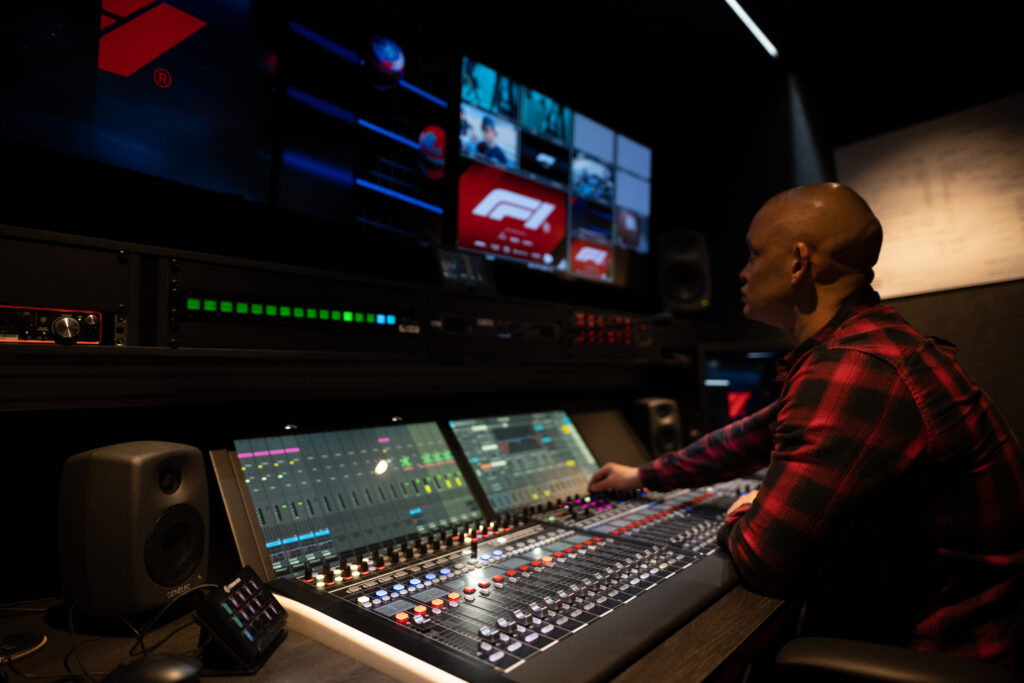
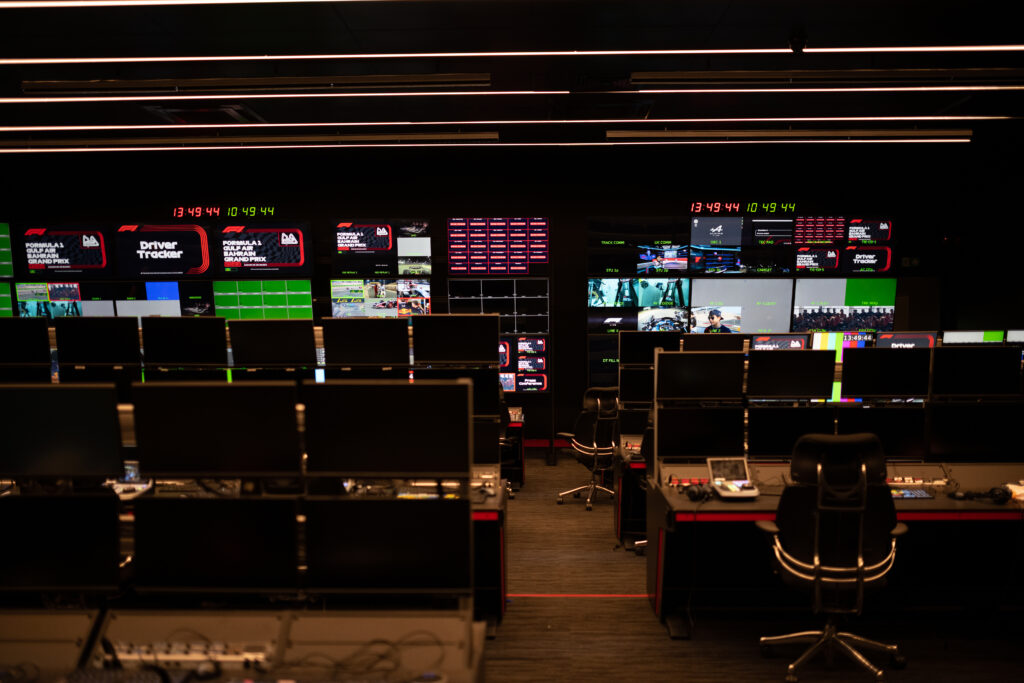
Lots of technology because mistakes are not allowed
The journey of discovery at the MTC starts with the large hall in front of the Control Rooms, where a car, the Lenovo branded VR visor and the seat-and-wheel combo for playing video games in the shoes of a pilot are on display. The immersion in the rooms, the visible instruments, the high level of technology, and the need to perform a series of operations in a very limited fraction of time make it immediately clear why the team of technicians and engineers live race day with great enthusiasm. From Broadcast & Race Control to Team Radio, but also in the World Feed Audio Booth and Telemetry & Onboard Engineering, the collective commitment unfolds in a chain of different tasks, all of which are crucial to the product’s success.
Thanks to the 10GB fibre connection network that links the Biggin Hill hub with the circuits (in case of breakdown or emergency, the alternative is satellite transmission), the ladder structure that dissects what is happening on the track and in the pits allows the production manager to have to choose between two signals what to show to those following the race.
This happens because the Control Room monitors and analyses every single image operating with a latency of between 180 and 250 milliseconds in relation to what is happening on the track, while the signal takes about 6 seconds to reach the screens of the spectators, who are obviously unaware of what is happening behind the scenes. Equipped with five rows of dozens of stations, each behind a plethora of large screens positioned at the back, the Media Control Room is the beating heart of the hub from which nothing escapes: corners, overtaking, pit-stop movements, crashes, drivers’ glances, team chatter, public faces, everything ends up on the monitors in here.
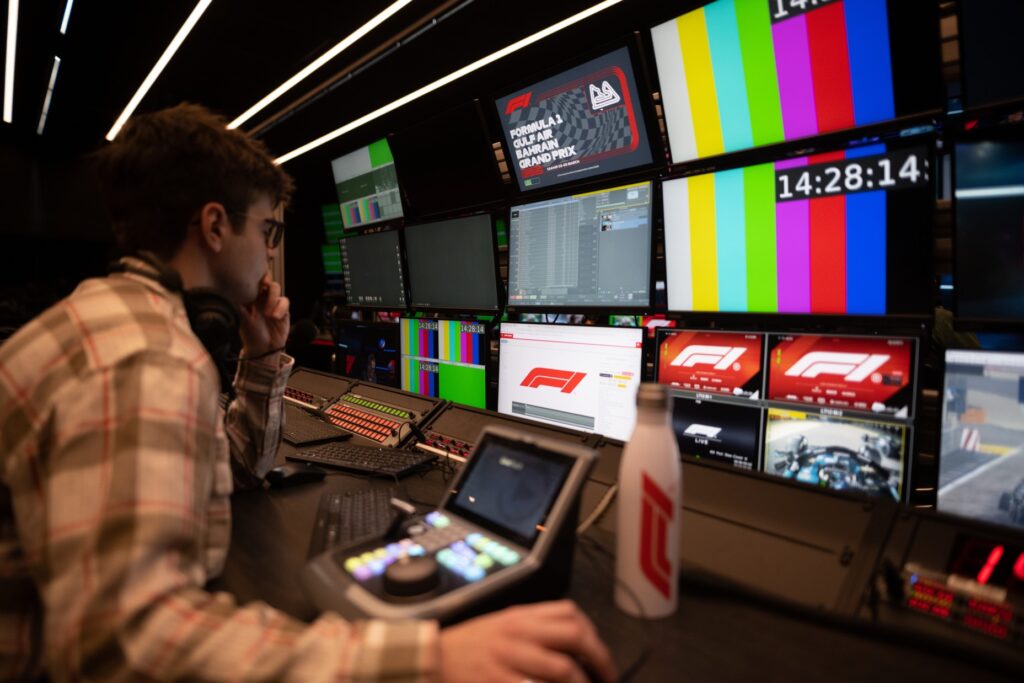
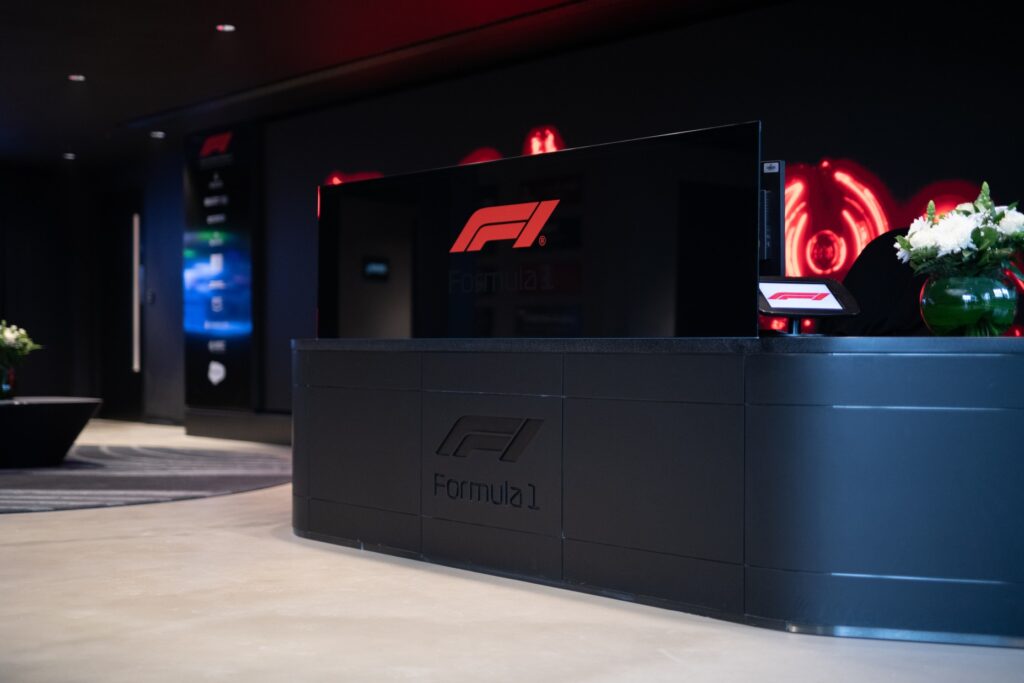
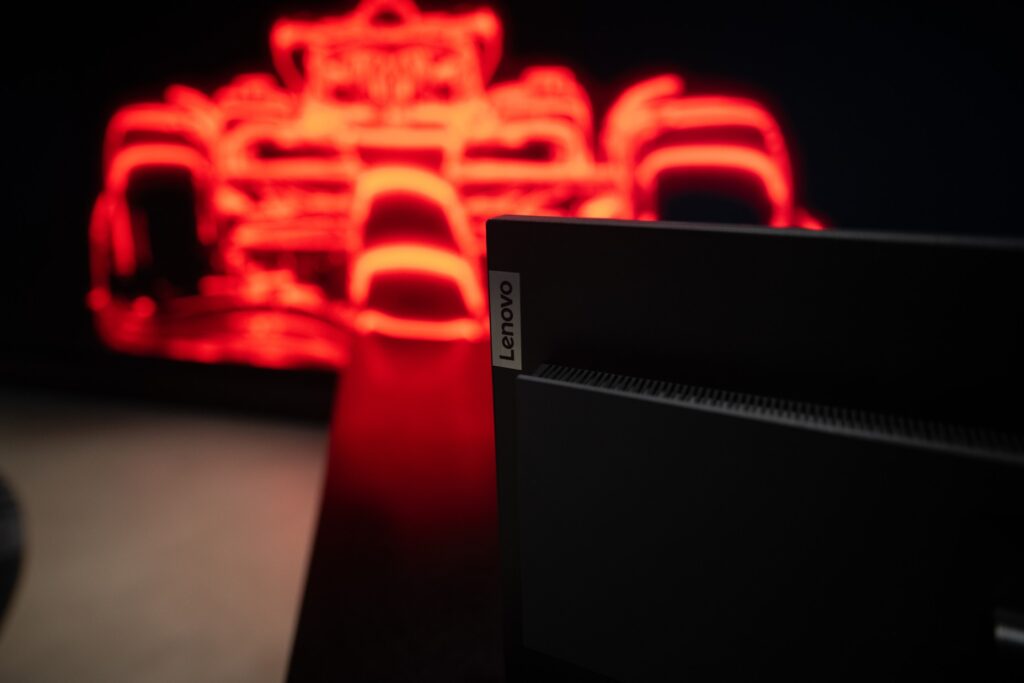

Monetising global interest also with AR
Small but crucial for transmitting the drivers’ adrenalin to the public during the race is the Team Radio space, filled with flat, curved, large and small screens. Here, the specialists intercept the dialogues of the twenty drivers with their respective teams. Radio communications are unrestricted, so everyone can hear what others are saying, and so they want to avoid giving away valuable information. An extra difficulty for the listeners, who find themselves listening to up to five conversations at the same time and, having heard the effect created by the simultaneity of voices, I can assure you that it is anything but easy to pick up the audio and sense the level of importance in determining which exchange to let the spectators listen to or broadcast on F1’s social accounts.
Another aspect that makes the Media & Technology Centre unique is its ability to monetise the huge global interest in Formula 1, which attracts companies and advertisers at all levels and of all sizes. So, alongside the main sponsors for the entire season, there are a large number of contracts with national companies valid for one or more races.
However, there is insufficient space to ensure a corner of visibility on the track for each one, so some advertisements appear on the public’s screens via augmented reality. The peculiar thing is that in contrast to those who flaunt the use of this type of technology, the aim here is to make the digital advertisement as realistic as possible. Incidentally, it should also be considered that some advertisements can be replaced where they conflict with laws in force in the country hosting the competition: an example is alcohol brands in some Arab countries.
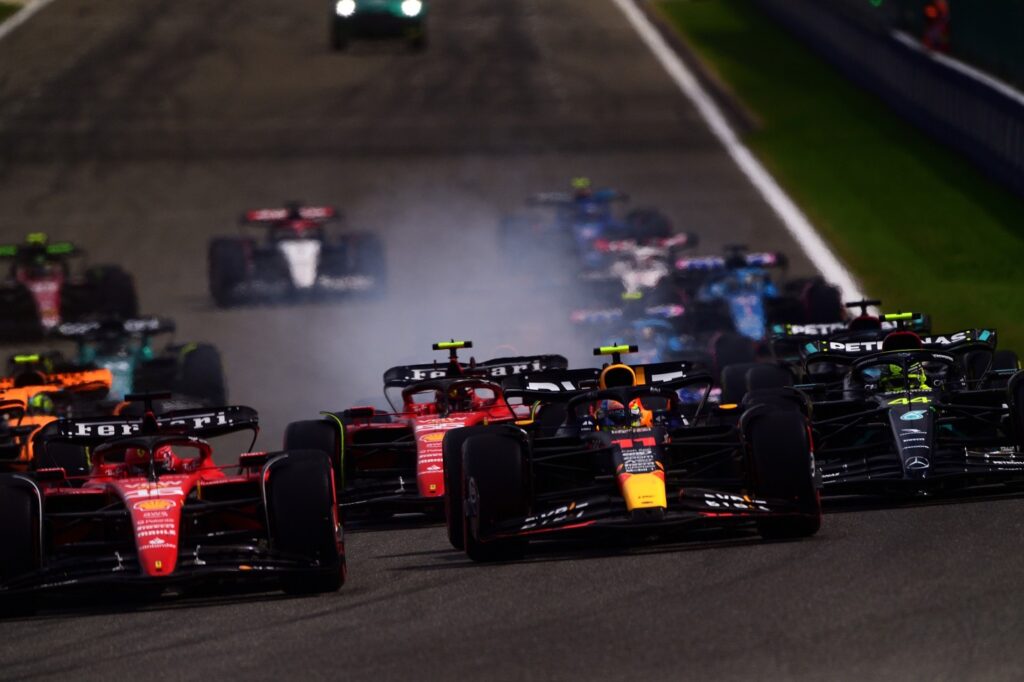

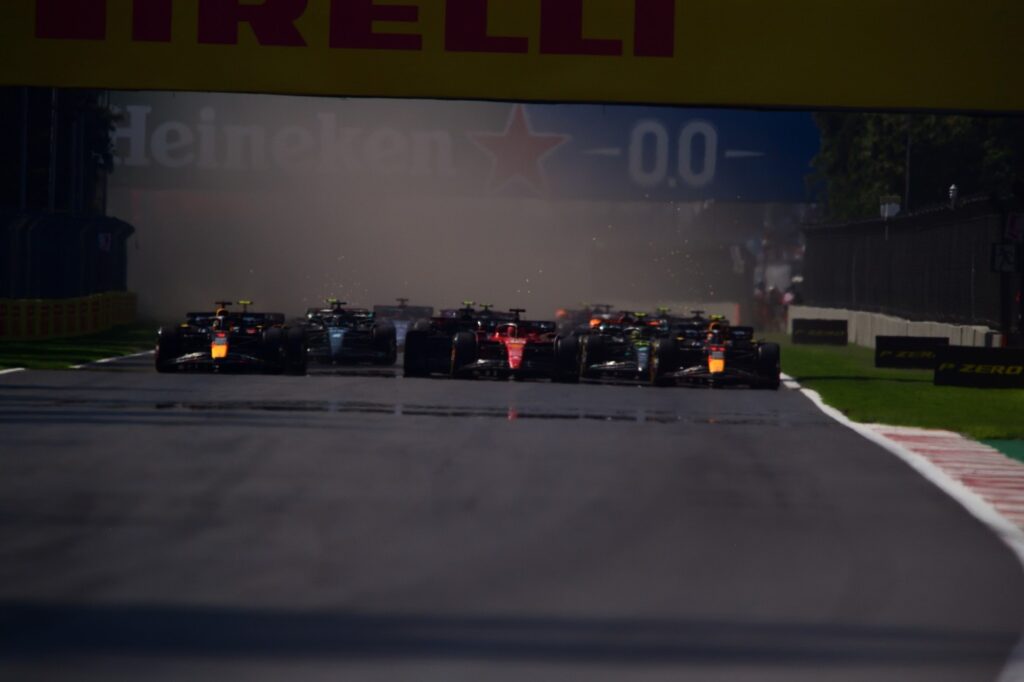
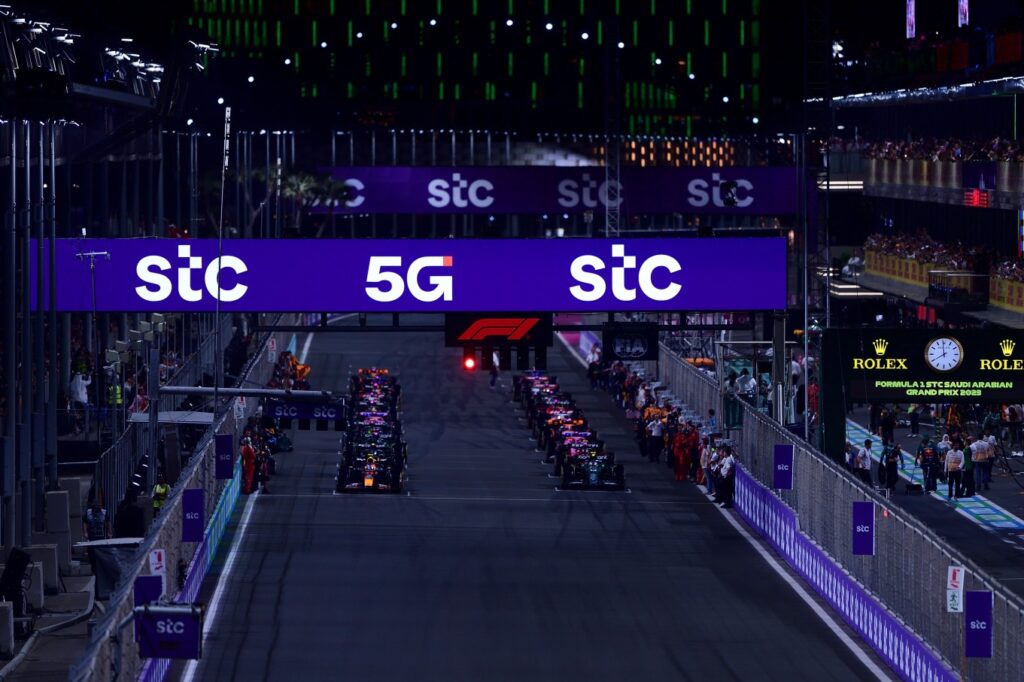
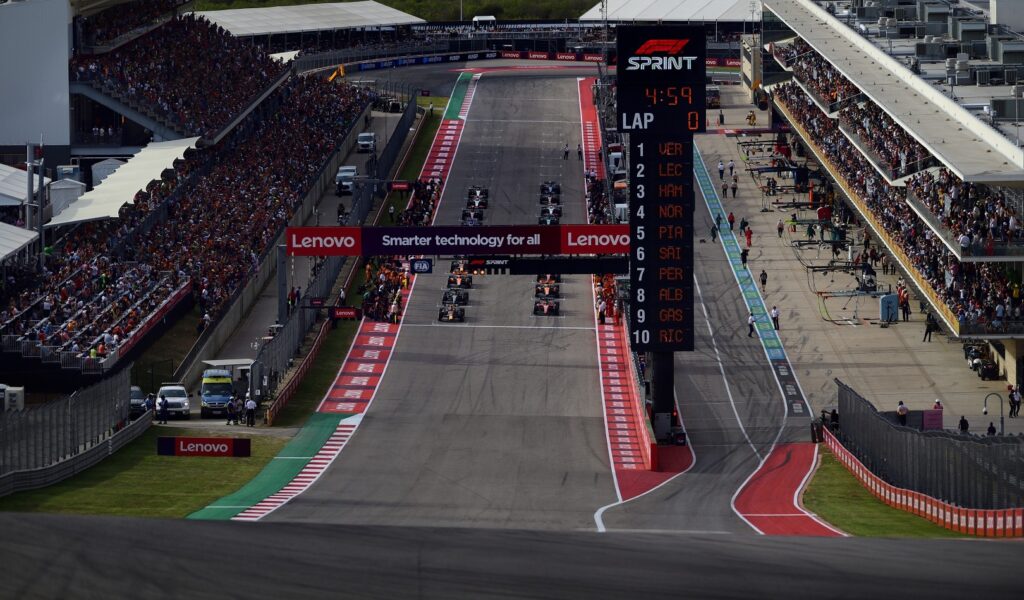
Sport and technology is an inseparable pair
As for the images, this year’s novelty will be the high-speed slow motion integrated into the main race cameras, while a helicopter and a wired camera will be used for filming from above, but not drones, which are too slow and have limited autonomy to be a viable alternative for Formula 1. Attention to detail and the need to produce an extensive list of content is a must at the MTC, where there is also a new studio that will be the centrepiece of the pre-and post-race broadcasts on the Formula 1 TV app, with the audience finding more information thanks to augmented reality in addition to presenters and graphics, in a technical process similar to what Eurosport has been doing for some years now when it broadcasts Grand Slam tennis tournaments.
The visit to the Media & Technology Centre was useful in understanding the enormous teamwork that allows the F1 Circus to shine around the world. Still, it also shows how technology and its evolution are a priority to make racing more and more intriguing. “The main thing for us is the satisfaction of the fans, and this is possible through innovation, technology and passion,” said Pete Samara, Director of Strategic Technical Ventures. It’s a mix that fans like: ‘Fans appreciate that Formula 1 is always on the cutting edge of innovation, trying something new every time, whether with the cars, the data or the fans themselves.

